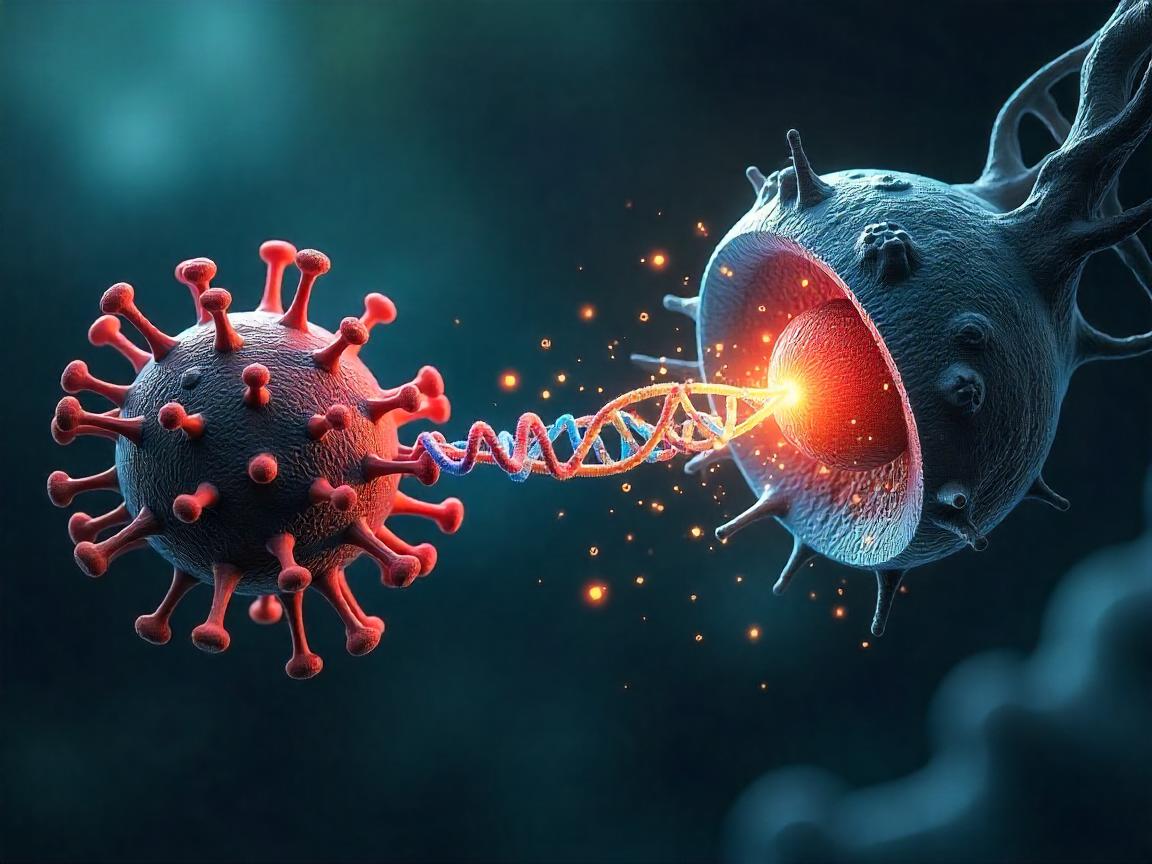
For generations, we have imagined viruses as a unique entity: hostile intruders that we must eliminate at all costs, no matter what means. But what if the pathogens that we have been fighting for centuries were also secret stars of innovations of the nature? An increasing amount of evidence, as in Nature or even a recent article in the Science section of The New York times, indicates that viruses have turned out to be much more than mere spectators or agents of destruction.
In the small historic background they have silently promoted the evolutionary developments that transformed the microbes into multicellular organisms and eventually into us. This shattering point of view is overturning the way we thought everything about the way life develops.
Rethinking Viruses: The Symbiotic Side of Infection
Several decades ago, everyone would start picturing pandemics and misery with just talking about viruses. The recent estimates, however, provided in the Encyclopedia of Virology point out that as much as 8% of our genomes has been retained in form of residuals of the ancient infection with viruses, the endogenous retroviruses. These are not just fossils of viral sequences. The thing is that our biology has co-opted them to be useful in many instances. Consider syncytin gene, for example. In its absence, the mammal would lack placentas. Millions of years ago, a retrovirus infection activated this gene, enabling the cells of the body to fuse into the tissue that connects a mother to her unborn baby.
A study, published in Nature Microbiology last year, revealed that even some of our ancient viral integrations may have helped to shield our ancestors against later infections. These viral fossils now took over the genomic parking spaces that viruses normally prey upon, serving as a kind of immunological graffiti which, in a sense, tags our genome saying, in effect, no vacancy here. The suggestion that there has been truly an evolutionary way to explain things like infections that have been previously dismissed as evolutionary accidents as having a hand in critical aspects of human development is both humbling and awe-inspiring.
Viral DNA and Evolutionary Leaps
Among the most scandalous questions asked in evolutionary biology is, why do some species appear to explode in complexity after taking comparatively short periods? A 2024 survey of 200-plus genes in corals and marine algae in Cell found that they originated in viruses. The viral genes seem to become active at the time of heat stress, which offers their hosts a fighting chance to survive the changes in the climate.
Suppose: a creature at the crowded brink of a warming ocean discovers life preservers in a bit of viral code that it picked up a long time ago. And this is not just of interest to scholars. It is a vital wake-up call to the fact that the current climate crisis is only going to get worse, and viral gene transfer may give us a chance to discover or even design resilience mechanisms within endangered ecosystems.
Even in the vertebrates, an increasing body of evidence shows that viruses were evolutionary speeders. As an example of the trend, one study published earlier this spring in Science Advances noted that some fish species have evolved to have viral genes expressing heavy metal detoxification regulation. To put it in other words, the viral DNA provided them with a genetic shortcut that would otherwise enable them to survive in an otherwise lethal environment.
Ancient Pandemics: Evolution’s Toughest Tests
Reflectively, pandemics are the stress tests of the species. Viruses kill not only people in large numbers, but their selective pressure can transform genetic diversity on a deep level. As an example, researchers analyzing human remains in Europe and Asia dated to over 2000 years ago recorded the marks of being exposed to the smallpox virus. The Nature Communications report published in March 2025 states that genes associated with immunity to the viruses were found significantly higher than in the populations in areas where there were fewer epidemics in the past.
People have not long forgotten this history. Consider COVID-19. Imperial College London researchers already have written in a paper about the flashing genetic patterns that may affect how the immune systems in the future respond to viral challenges.
Harnessing Viral Power: The Frontier of Biotech
Naturally, the fact that we can creatively utilize viruses does not imply that we should welcome them without any restrictions. Nevertheless it does show tantalizing prospects in biotechnology. Scientists have already adopted the use of viruses in gene therapy to transmit healthy genes to the patients. Luxturna is the first cure of a kind of inherited blindness that employs viruses to regain their eyesight, and a success that would have been impossible to envision 2 decades ago.
I talked to one Dr. Elena Morales, an evolutionary biologist at Max Planck institute, and she explained to me the following: When we began to understand viruses as evolutionary architectures, it became apparent that they were not mere enemies. They were dance partners who danced in ancient times. The implication is staggering when we learn to do it on purpose!”
Conclusion: A Viral Legacy We Can’t Ignore
Ultimately, viruses have been our enemies, and life saviors. They have modelled our immune systems and infested our DNA with inventions, and even provided us with the weapons in the struggle against genetic disease. Seeing makes us revisit the dichotomy of good and evil in biology.
Next time you read a summary of the risk of emerging viruses, perhaps you will remember how they are also secretive in achieving the miracle of life. And not that evolution is never simple, because if one thing that I have learned about viruses is bringing it all. People sometimes achieve order only through a bit of anarchy, as the saying goes.